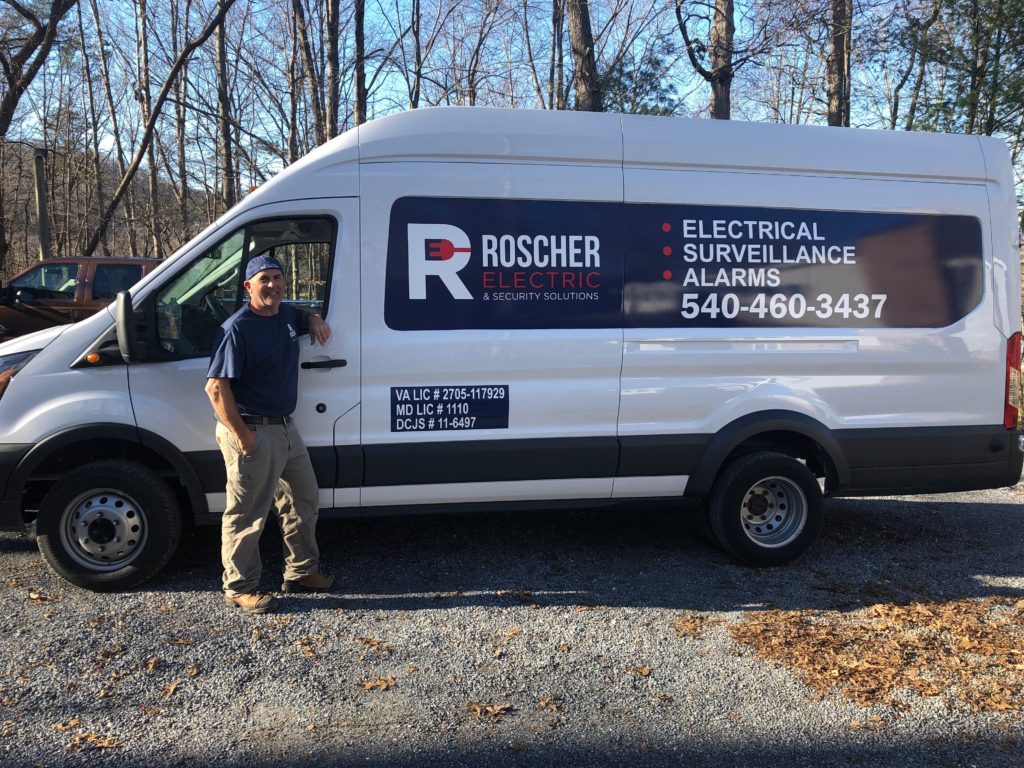
3M sign graphics from Augusta Sign Company of Staunton, Virginia
From Hand-Painted to Computer-Cut
It’s interesting to consider what I’ve learned about lettering vehicles over the years. Although I am getting pretty old, at least I didn’t begin lettering covered wagons, or Ford Model T’s! But I did begin lettering vehicles before the Golden Age of Computer Graphics, when vehicles were still lettered with a paint brush and a can of paint.

Memories of a Signpainter
I remember doing my first fleet of vehicles for an electric company in Silver Spring, Maryland, Neary Electric, that used a neat and intricate letter style with red, white and blue inset elements in each letter, all done by hand using a hand-drawn and hand-pounced pattern that I made in my shop. The year was about 1986 or 87 when I still resided in Maryland. When I moved to Waynesboro, VA a few years later I continued to travel to Silver Spring to letter new vans for the company for a little while.

Avery Vinyl Branding
New Age Dawns
After the computerized plotters became commonplace, it just didn’t make a lot of sense to hand letter trucks any more. The many advantages of using vinyl graphics for vehicles easily outweighed paint: First, red vinyl lasted much longer than a few years out in the UV rays from the sun like sign paint did. Back then it was good if you used a 5-7 year vinyl product, but nowadays a 10-year lifetime is the new standard for cast vinyl sheeting. You may wonder what cast vinyl is? There are two types of sign vinyls, cast and calendered.

A Lesson on Vinyl Types
Cast films are considered the industry premium. These films start in a liquid state with the ingredients blended together and then poured onto a casting sheet. The casting process produces a thin gauge film—usually 1- to 2-mil thick. By casting film on a sheet, the film stays in a more relaxed state, resulting in a durable, flexible, conformable and dimensionally stable film that retains color well. These films are ideal for complex surfaces such as vehicles and where a smooth finished look is expected. The expected life of cast films can usually reach 10 years before any discoloration or adhesive loss begins!
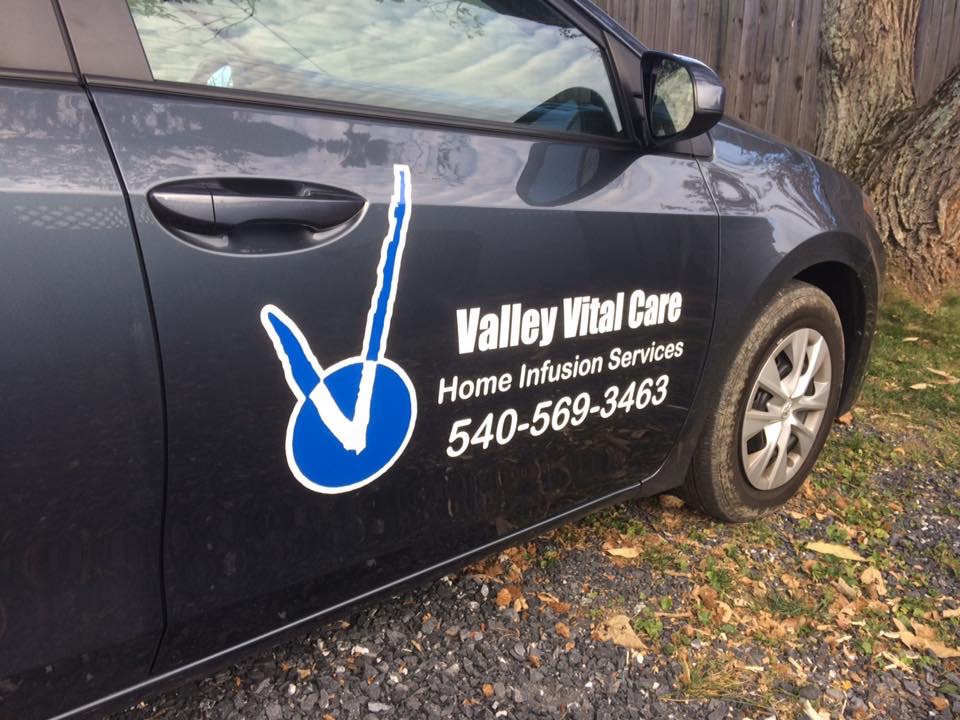
Calendered films are often called intermediate or short-term films. They start with a molten mixture that is extruded through a die and fed though a series of calendering rolls. The rolling and stretching process produces thicker films (3- to 4-mil is common) that have some inherent memory, making the film less dimensionally stable and less conformable with a tendency to shrink when exposed to heat. However, they are less expensive, somewhat more scratch resistant, and their heavier weight makes them easier to handle than cast films. These films are well suited for flat and simple curved applications on a variety of substrates. Expected lifespan of calendered vinyl films outdoors can range from about one to six years.
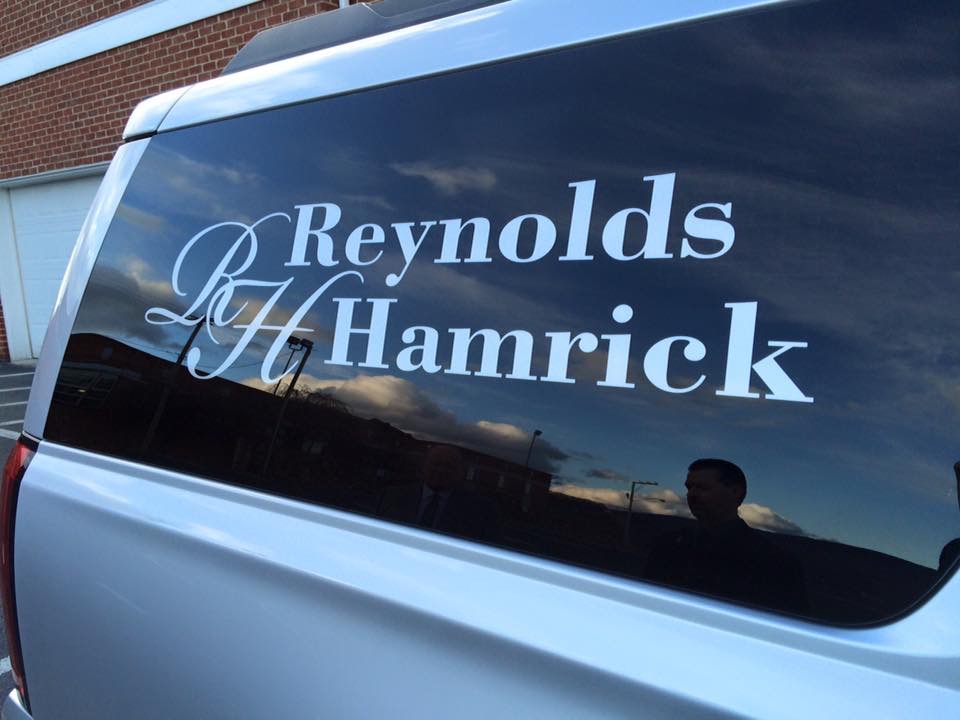
Let’s Wrap It Up
Today, wrapping vehicles is the new trend, and it makes an effective statement out there on the roadways of the world. I tend to shy away from full vehicle wraps and focus on vehicle graphics projects that don’t involve fitting the vinyl films over complex vehicle contours, which is very tricky. I stick with simplified vehicle lettering jobs. I have the capability to take photos of each side of the vehicle and superimpose the graphic designs onto each sign on customer proof drawings. That way the client can see exactly how the graphics will be integrated into the vehicle before the project begins.
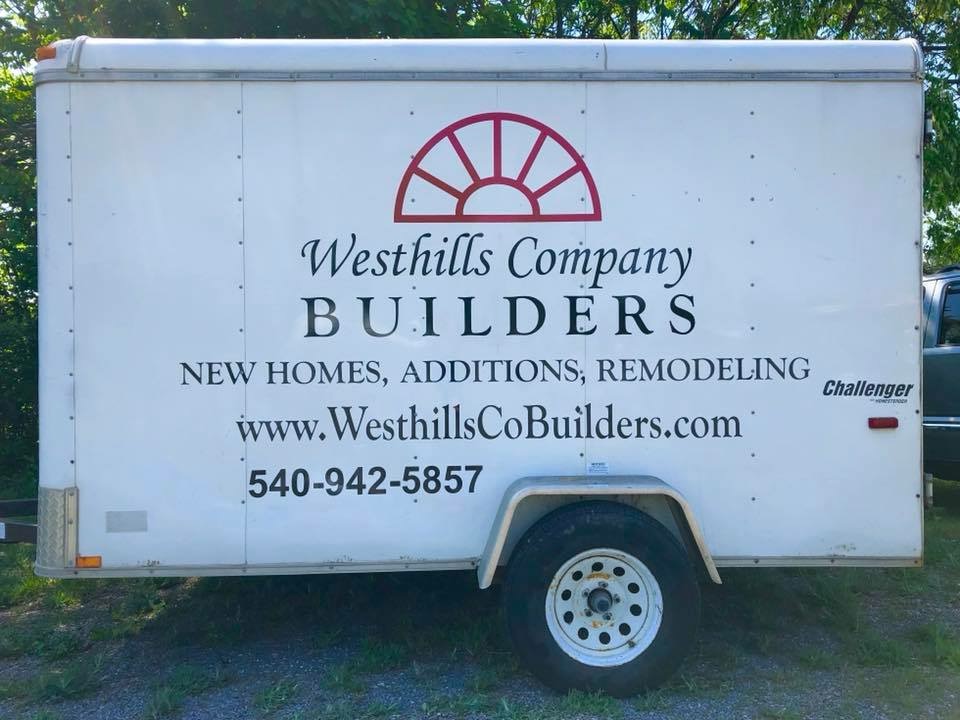
background surfaces.
Good Advice
I am able to letter vehicles up to a standard van size in my workshop garage bays. Anything larger I usually tackle at the customer’s lot or garage. Simple designs are usually one day projects, but more detailed designs may take 2 or 3 days to complete. It’s usually a good idea to stick with one sign company to letter your vehicles if you have a fleet. That way you can be assured that the designs and colors are consistent. Branding your vehicles is one important element of a well-branded company.

If you have new vehicles that need lettering or old ones that need re-branding, contact Augusta Sign Company, serving Staunton, Waynesboro, and Augusta County, and neighboring areas, with quality vehicle lettering services.
Mark Hackley owns Augusta Sign Company, 540-943-9818
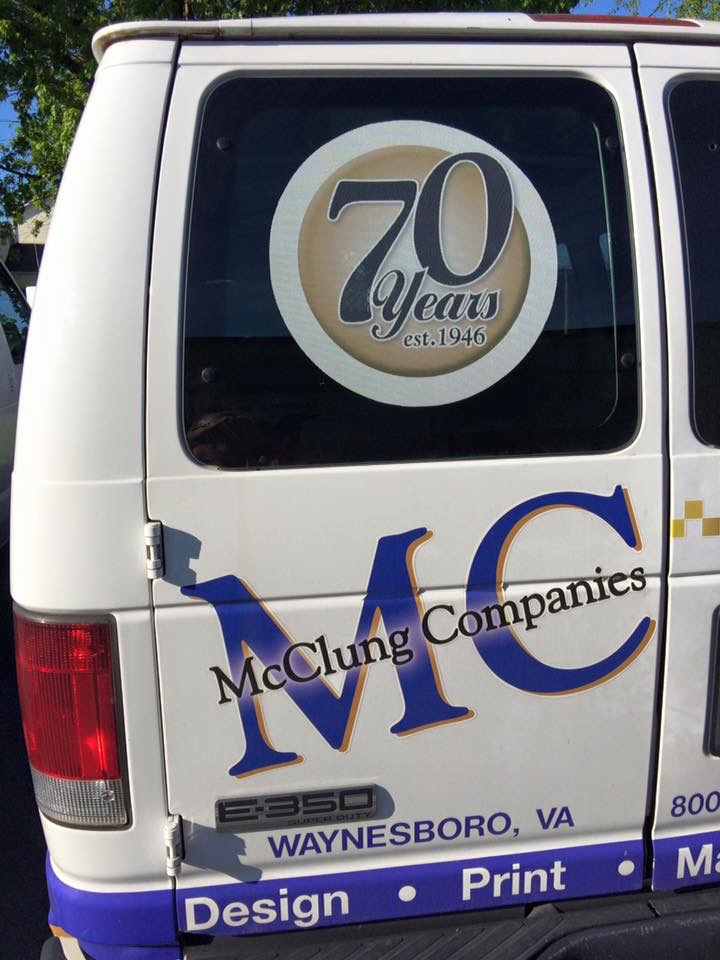
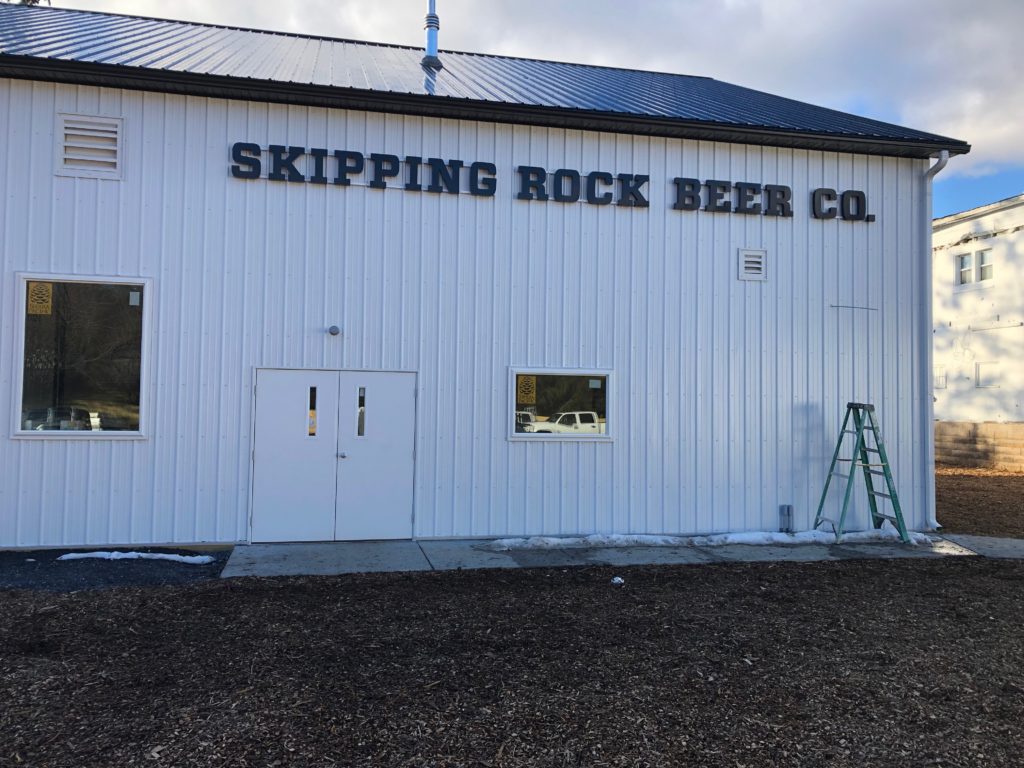
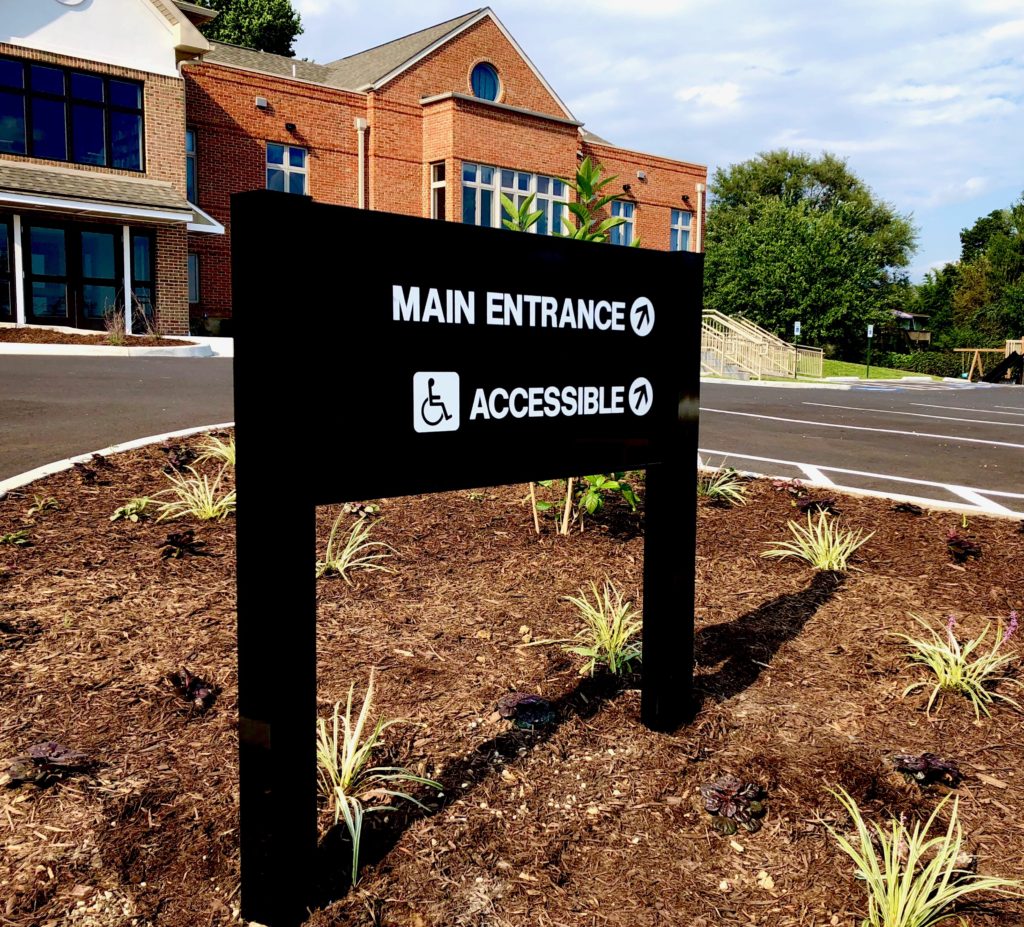
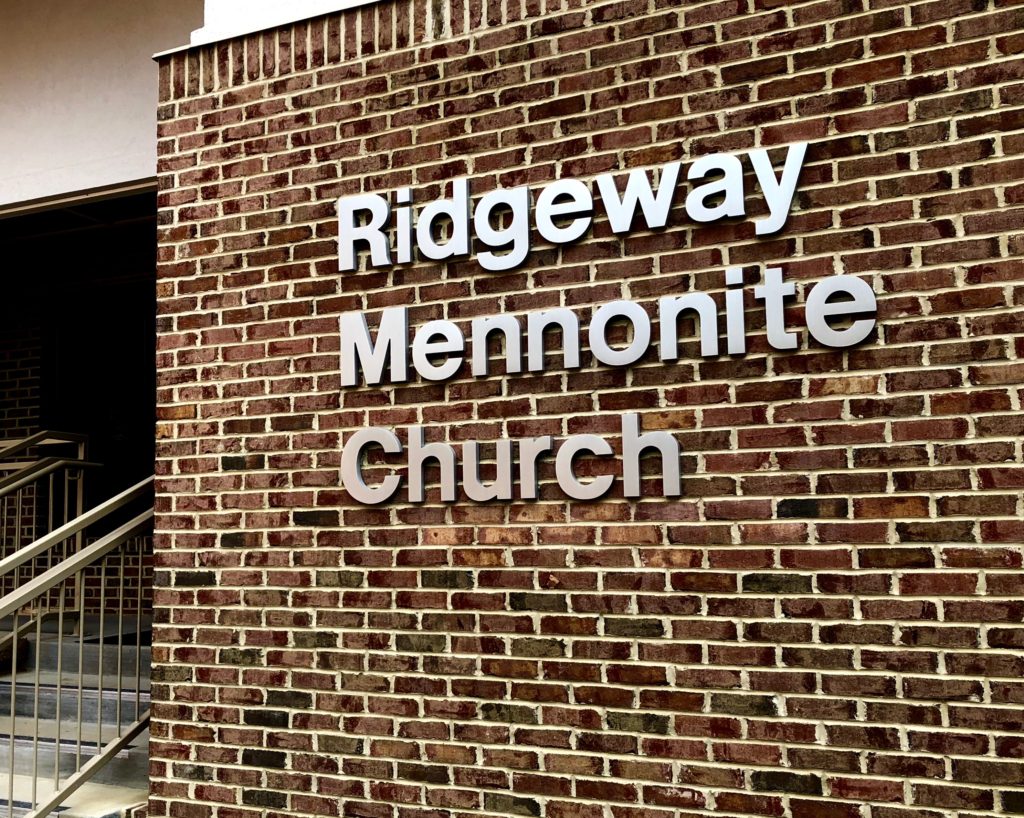

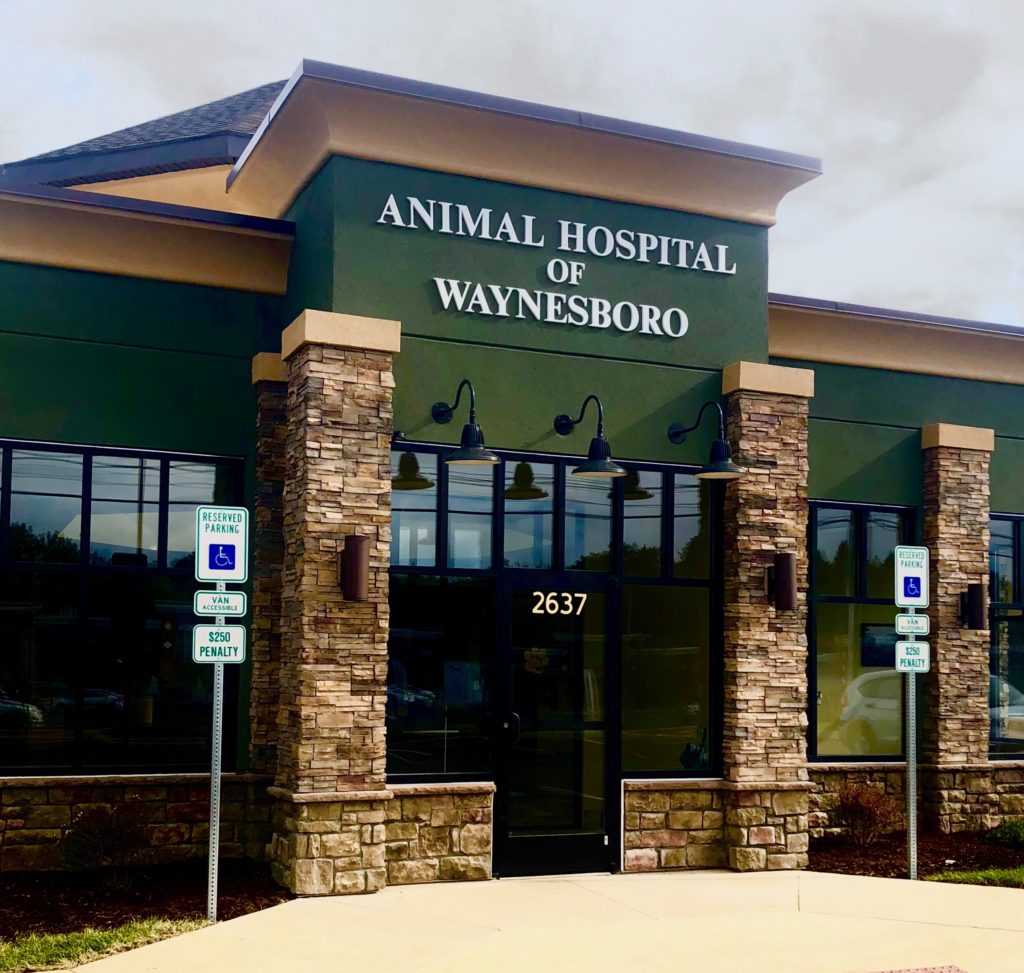
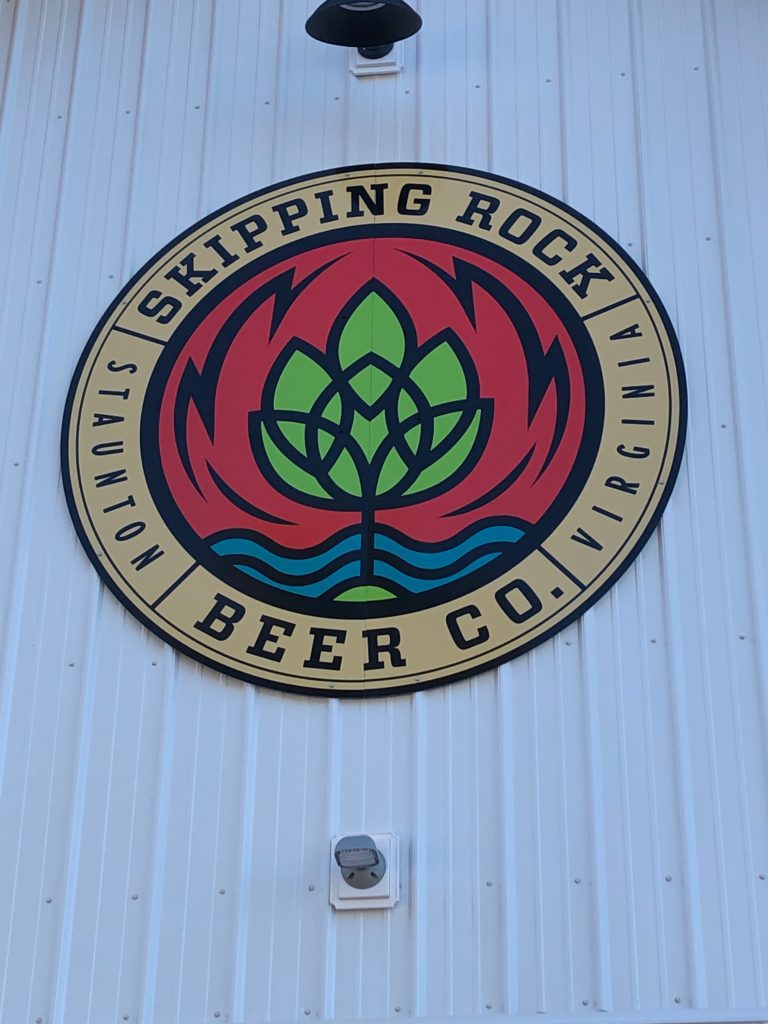

 LONG PERSONAL RELATIONSHIP
LONG PERSONAL RELATIONSHIP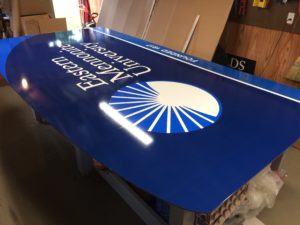
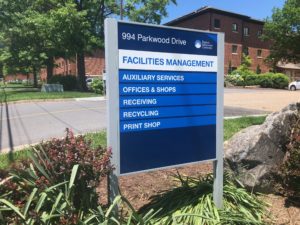 installing dimensional letters that commemorated a major donor, naming a new wing in his honor. Also, I remember lettering room names with dimensional wall letters after new construction.
installing dimensional letters that commemorated a major donor, naming a new wing in his honor. Also, I remember lettering room names with dimensional wall letters after new construction.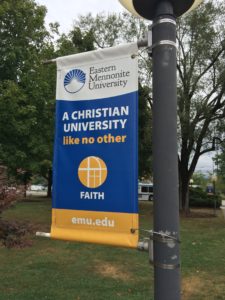 at this point that I began to serve them with pole banners,large banners for their athletic fields and events, and yet more exterior directional type signs.
at this point that I began to serve them with pole banners,large banners for their athletic fields and events, and yet more exterior directional type signs. developed my skills in signs and customer service at a facilities management level. Eventually I made it back to the Bethesda Naval Hospital where I morphed into an engineering technician for many years. It was in this role that I developed my skills in signage design on a facilities management level.
developed my skills in signs and customer service at a facilities management level. Eventually I made it back to the Bethesda Naval Hospital where I morphed into an engineering technician for many years. It was in this role that I developed my skills in signage design on a facilities management level.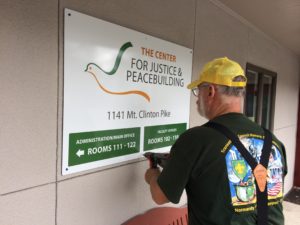 signs that fulfill the combined needs of facilities and marketing managers. Marketing people want their school brand to be recognized across the campus while facilities managers want people to be able to find their way around campus and also want them to be safe out there. I believe my signs help. And that’s why I enjoy making signs for Eastern Mennonite University. Many thanks to my college sign customers there and across Virginia!
signs that fulfill the combined needs of facilities and marketing managers. Marketing people want their school brand to be recognized across the campus while facilities managers want people to be able to find their way around campus and also want them to be safe out there. I believe my signs help. And that’s why I enjoy making signs for Eastern Mennonite University. Many thanks to my college sign customers there and across Virginia!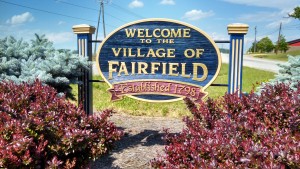
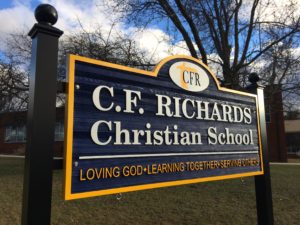 Afton, Crozet, Massanutten, Middlebrook, Goshen, Clifton Forge, Mount Sydney, Mount Crawford, Dayton, Broadway, Timberville, New Market, Stanley, Luray, Front Royal, Woodstock, Mount Jackson, Edinburg, Strasburg, Stephens City, Kernstown, Winchester, Fairfield, Natural Bridge, Fincastle, Troutville, Buchanan, Vinton, Rocky Mount, Ferrum, to mention a few!
Afton, Crozet, Massanutten, Middlebrook, Goshen, Clifton Forge, Mount Sydney, Mount Crawford, Dayton, Broadway, Timberville, New Market, Stanley, Luray, Front Royal, Woodstock, Mount Jackson, Edinburg, Strasburg, Stephens City, Kernstown, Winchester, Fairfield, Natural Bridge, Fincastle, Troutville, Buchanan, Vinton, Rocky Mount, Ferrum, to mention a few!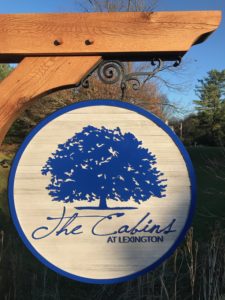 Churches, Medical Offices including Dental, Optical, and Veterinary, Professional Offices, Parks and Recreation, Public Works, Downtown Retailers, Specialty Shops, Hospitality, Private Farms and Residences, Industrial, Specialty Services, Schools, Libraries, and Museums.
Churches, Medical Offices including Dental, Optical, and Veterinary, Professional Offices, Parks and Recreation, Public Works, Downtown Retailers, Specialty Shops, Hospitality, Private Farms and Residences, Industrial, Specialty Services, Schools, Libraries, and Museums.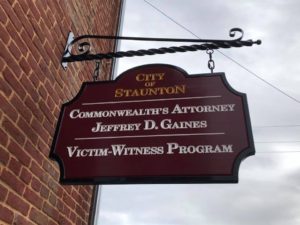
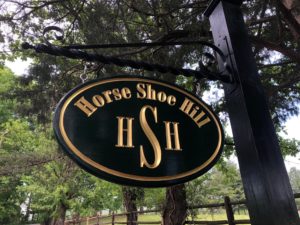
 area churches of all denominations and many times I will donate my time to install them if they are reasonably close to my shop in Staunton, Virginia. I make simple banners in my shop using pre-cut and hemmed rolled one-sided banner stock material, a white 13 oz. material that has a glossy sheen. I design the banner layouts on my computer design software and use a vinyl-cutting machine to cut the graphics that I later apply to the blank, white banner. The banners come with pre-spaced grommets that allow for hanging on poles with hooks or attaching to walls and other flat surfaces with screws and fender washers. For more detailed banners or ones with more than one or two colors, I send them off for digital printing. In my small shop, banners may take longer
area churches of all denominations and many times I will donate my time to install them if they are reasonably close to my shop in Staunton, Virginia. I make simple banners in my shop using pre-cut and hemmed rolled one-sided banner stock material, a white 13 oz. material that has a glossy sheen. I design the banner layouts on my computer design software and use a vinyl-cutting machine to cut the graphics that I later apply to the blank, white banner. The banners come with pre-spaced grommets that allow for hanging on poles with hooks or attaching to walls and other flat surfaces with screws and fender washers. For more detailed banners or ones with more than one or two colors, I send them off for digital printing. In my small shop, banners may take longer 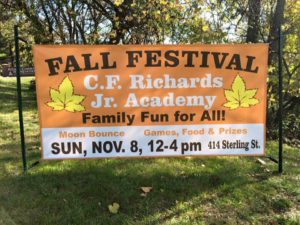 to complete than some of the other shops in my area. If people are in a big hurry, I usually suggest they contact “All Phase Graphics” in Staunton, or “Viking Forge Design” in Waynesboro. Both these shops have in-house digital printers and may produce banners faster than what I can do. If you plan ahead, it takes about 1-2 weeks to get a banner order out during normal production levels at my shop.
to complete than some of the other shops in my area. If people are in a big hurry, I usually suggest they contact “All Phase Graphics” in Staunton, or “Viking Forge Design” in Waynesboro. Both these shops have in-house digital printers and may produce banners faster than what I can do. If you plan ahead, it takes about 1-2 weeks to get a banner order out during normal production levels at my shop.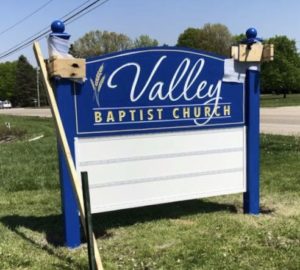 viewing distance and speed limit. Most letters are in the 3″-8″ range for the church marquees I have made, and the letters are typically black on a white background. A church situated on a high-traffic highway may be more inclined to invest in an electronic marquee which has many advantages over the manual marquee signs that I can produce in my shop. I recommend churches interested in electronic signs contact “Holiday Signs” in Chester, VA.
viewing distance and speed limit. Most letters are in the 3″-8″ range for the church marquees I have made, and the letters are typically black on a white background. A church situated on a high-traffic highway may be more inclined to invest in an electronic marquee which has many advantages over the manual marquee signs that I can produce in my shop. I recommend churches interested in electronic signs contact “Holiday Signs” in Chester, VA.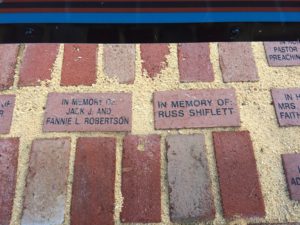 The church raised enough money to purchase a new sign and they had a friend lay the brick at its base. Money raised this way could also be used for a comprehensive marketing campaign for a church event or events.
The church raised enough money to purchase a new sign and they had a friend lay the brick at its base. Money raised this way could also be used for a comprehensive marketing campaign for a church event or events.